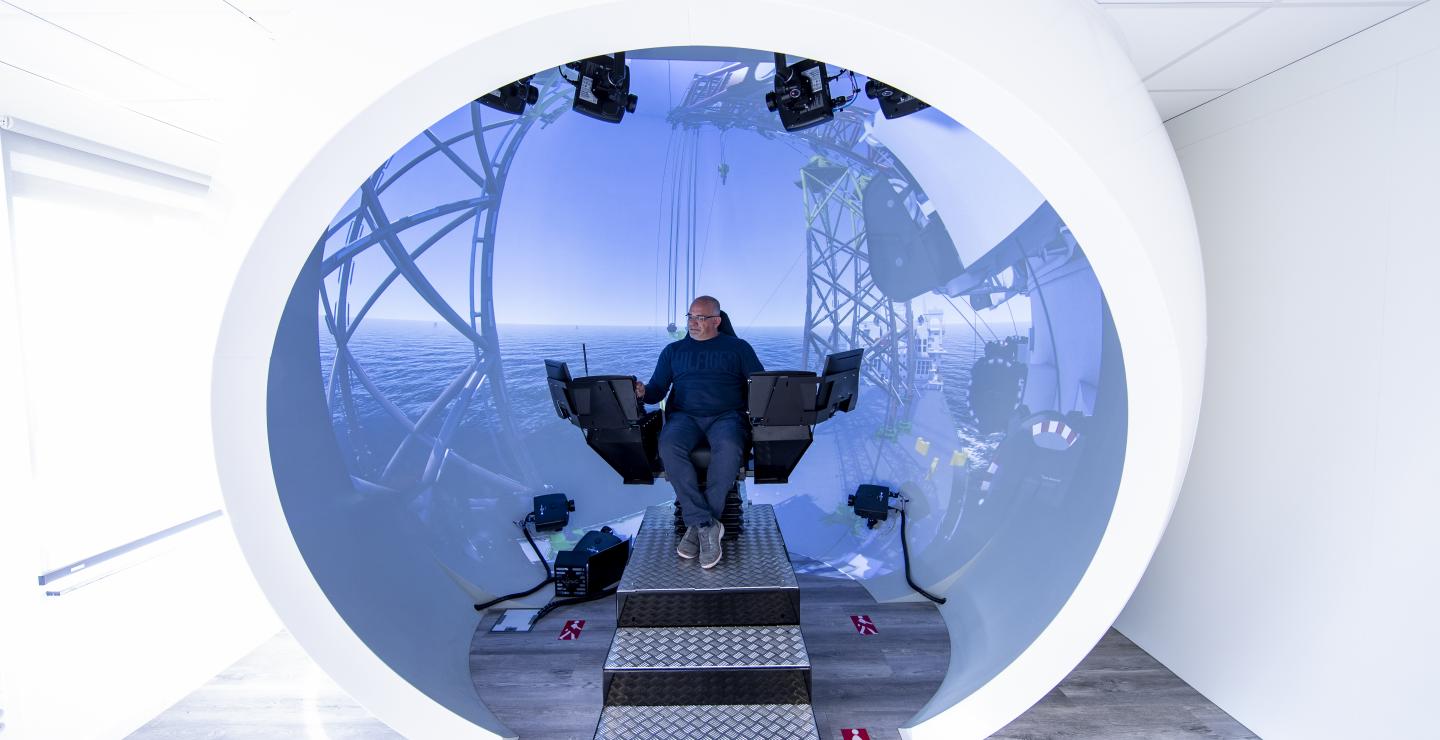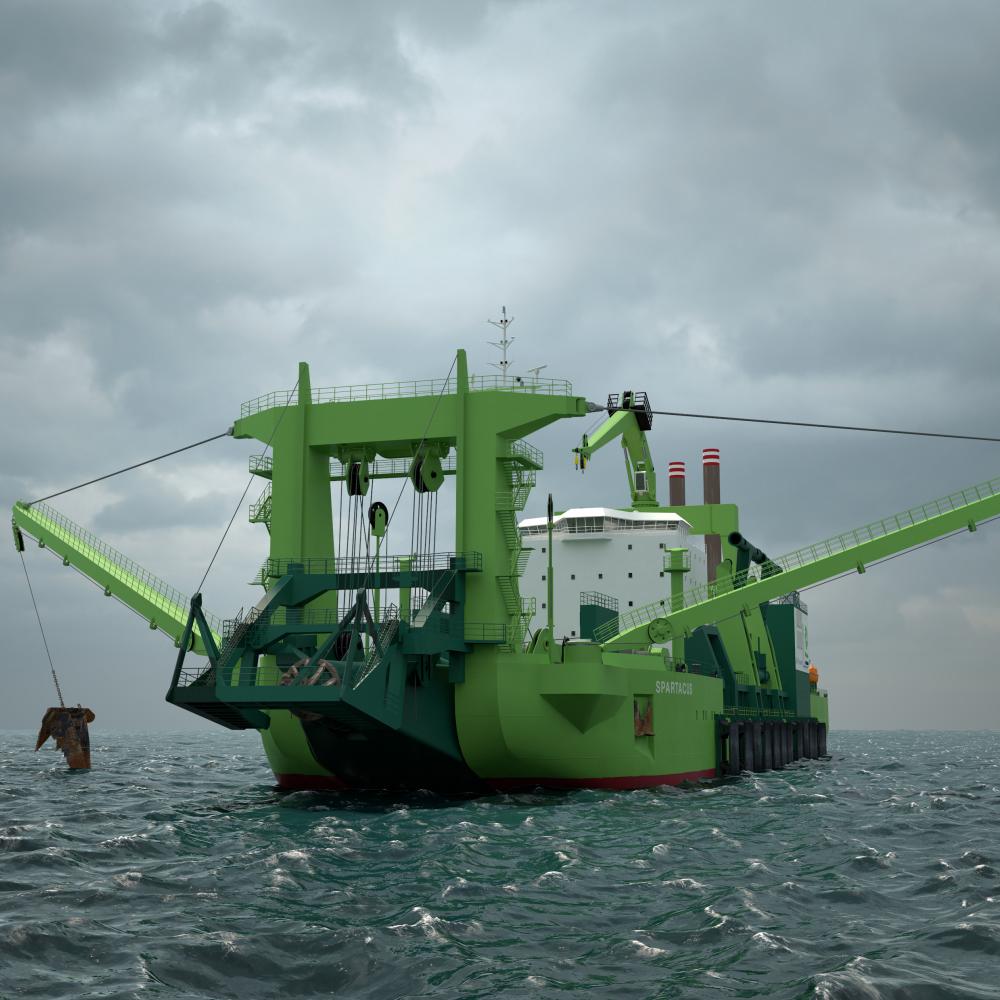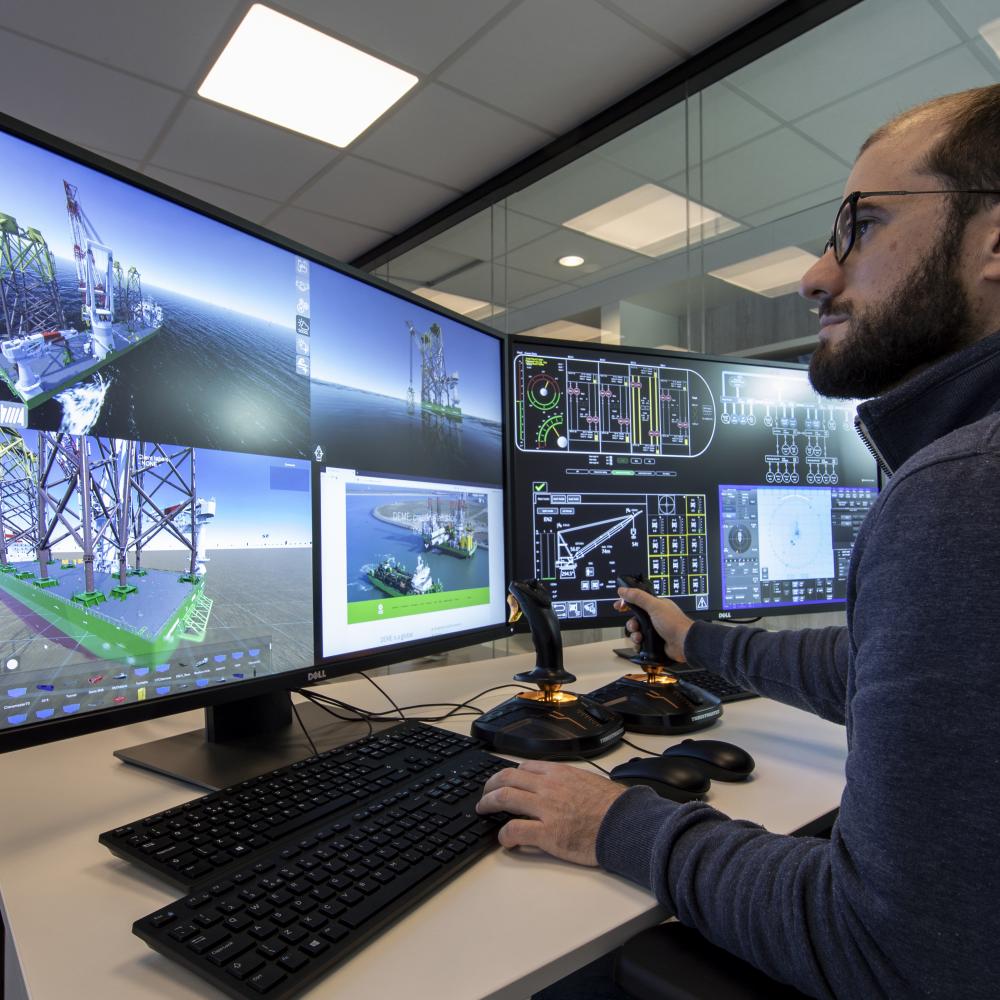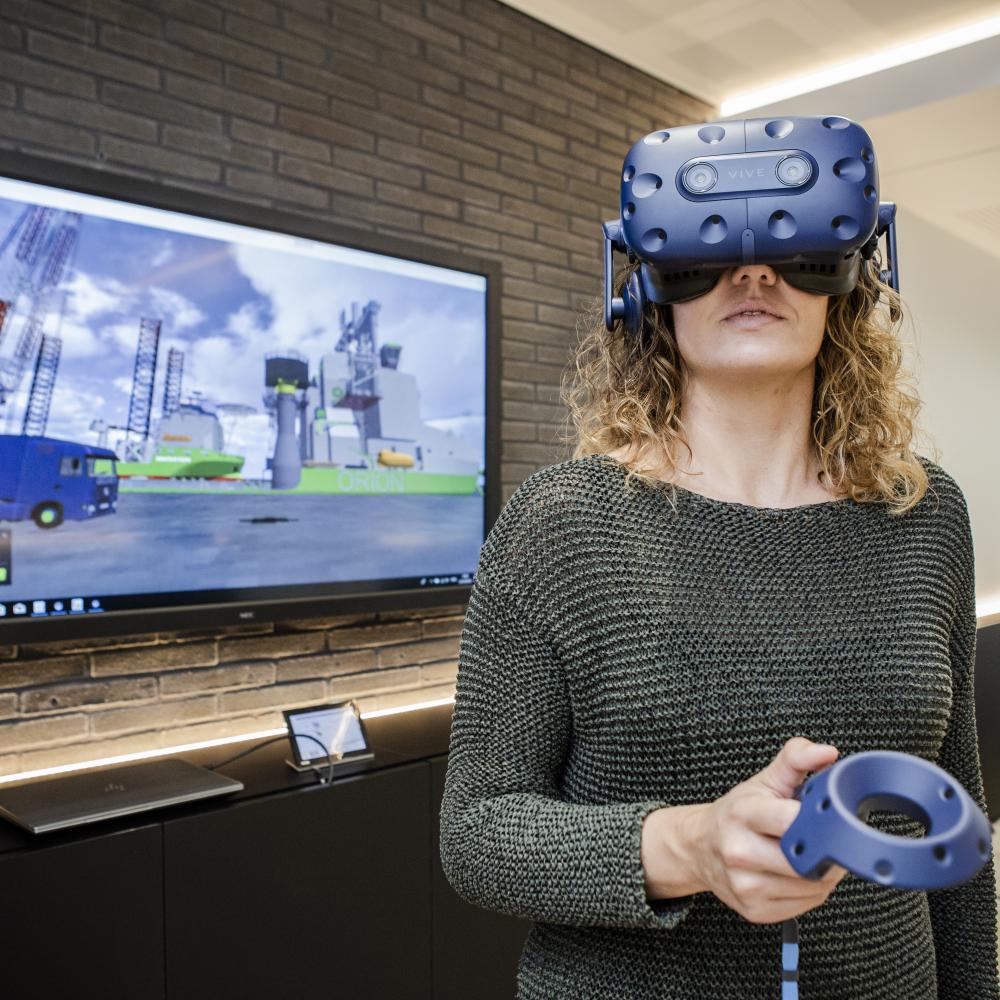There is a saying about how people learn and create memories that explains why virtual reality is such a powerful tool for training and design at DEME. It suggests we remember (about) 10% of what we read, 20% of what we hear, 30% of what we see, 50% of what we see and hear ... and 80% of what we personally experience. By putting crews in (what amounts to) real-life but simulated situations, DEME has been able to raise training and safety levels appreciably, while also improving the initial system designs. This immersion is not only training vessel crews, but also impressing clients that DEME has got a firm grip on every aspect of its business.
It only takes a moment to appreciate just how quickly the brain assumes you are dealing with the real thing when in a virtual reality setting. Indeed, the level of image detail (of the VR) hardly seems to matter provided the objects around you move in the way your brain expects them to move. And why is that? Well, it seems that virtual reality taps into what your brain thinks it should be seeing, and fills in the gaps.



